What's New
Displaying results 3851 - 3860 of 4914
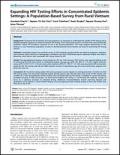
Resource | Publications,
To improve HIV prevention and care programs, it is important to understand the uptake of HIV testing and to identify population segments in need of increased HIV testing. This is particularly crucial in countries with concentrated HIV epidemics, where HIV prevalence continues to rise in the general population. This study analyzes determinants of HIV testing in a rural Vietnamese population in order to identify potential access barriers and areas for promoting HIV testing services.
A population-based cross-sectional survey of 1874 randomly sampled adults was linked to pregnancy, migration and economic cohort data from a demographic surveillance site (DSS). Multivariate logistic regression analysis was used to determine which factors were associated with having tested for HIV.

Resource | Fact Sheets,
In December 2010, there were 174 new HIV Ab seropositive individuals confirmed by the STD/AIDS Cooperative Central Laboratory (SACCL) and reported to the HIV and AIDS Registry (Table 1). This was a 38% increase compared to the same period last year (n=126 in 2009), and the highest number of cases reported in a month since 1984 [Figure 1].

Resource | Fact Sheets,
Since 2007, passive HIV case reporting in the Philippines showed an increasing number of cases from younger age-groups (20-29 years). Anecdotal reports also indicated that substantial proportions of most-at-risk populations (MARP) were adolescents. It was critical to understand patterns of sexual behavior and drug-use among Filipino most-at-risk adolescents (MARA) to establish an effective prevention program and deliver needed services. Since the National Integrated HIV Behavioral and Serologic Surveillance (IHBSS) was limited to adult populations of injecting drug users (IDU), female sex workers (FSW) and males having sex with males (MSM), there was no official data on MARA for better targeted programming.
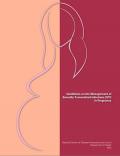
Resource | Guidelines,
Pregnant women with STI can transmit the infection to their children, resulting in significant morbidity and mortality. Chlamydia trachomatis can cause neonatal pneumonitis and maternal endometritis. Neisseria gonorrhea can result in ophthalmia neonatorum, neonatal systemic infection, and maternal endometritis.
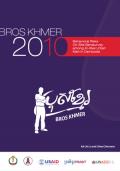
Resource | Publications,
The BROS Khmer (Behavioral Risks On-Site Serosurvey of At-Risk Urban Khmer Men) study was designed to collect integrated HIV serostatus and behavioral risk information among Cambodian men frequenting ‘hot spots’ (i.e., entertainment venues) or MSM (Men who have Sex with Men) with a mobile bus.
The behavioral data of 3,007 men (1,026 of which reported having had sex with a man) have shown that not only do differences exist between MSM and MSW (Men who have Sex with Women), but there are also significant differences in HIV-risky activities between MSMW (Men who have Sex with Men and Women) and MSMO (Men who have Sex with Men Only).
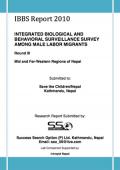
Resource | Publications,
This is the third round of the Integrated Bio-Behavioral Surveillance Survey (IBBS) conducted in 2010 to collect behavioral data from labor migrants in the mid and far western districts of Nepal. This round was conducted to obtain updated estimates of the prevalence of HIV among the labor migrants and also aimed to assess the changes that have taken place in the migration trends and the sexual behavior of the labor migrants in the mid and far western region of Nepal. The overall objective of the study is to determine the prevalence of HIV among returnee male labor migrants from India and to assess their HIV/STI risk-related behaviors.
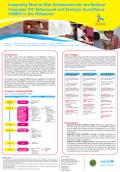
Resource | Fact Sheets,
Since 2007, passive HIV case reporting in the Philippines showed an increasing number of cases from younger age-groups (20-29 years). Anecdotal reports also indicated that substantial proportions of most-at-risk populations (MARP) were adolescents. It was critical to understand patterns of sexual behavior and drug-use among Filipino most-at-risk adolescents (MARA) to establish an effective prevention program and deliver needed services. Since the National Integrated HIV Behavioral and Serologic Surveillance (IHBSS) was limited to adult populations of injecting drug users (IDU), female sex workers (FSW) and males having sex with males (MSM), there was no official data on MARA for better-targeted programming.

Resource | Presentations,
This is the presentation from BROS Khmer's use of the mobile bus and audio computer-assisted self-interviewing (ACASI) to conduct an HIV Behavioral Serosurvey among urban men in eight Cambodia cities.
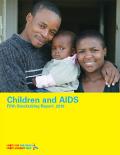
Resource | Publications,
For nearly three decades, HIV and AIDS have been devastating individuals and families with the tragedy of untimely death and medical, financial and social burdens. Although children's concerns have always been present within the great spectrum of need associated with HIV, they have to some extent been overshadowed by the very scale of the epidemic in the adult population.
Thanks to improved evidence and accelerated action, however, the story of how the AIDS epidemic is affecting children is being rewritten.

Resource | Publications,
The District Level Household and Facility Survey is one of the largest ever demographic and health surveys carried out in India, with a sample size of about seven lakh households covering all districts of the country. The Ministry of Health and Family Welfare (MoHFW), Government of India, initiated the District Level Household and Facility Survey (DLHS) in 1997 to provide district level estimates on health indicators to assist policy makers and program administrators in decentralized planning, monitoring and evaluation.
This volume gives information on key indicators at the state and district levels for all States/Union Territories (excluding Nagaland).





